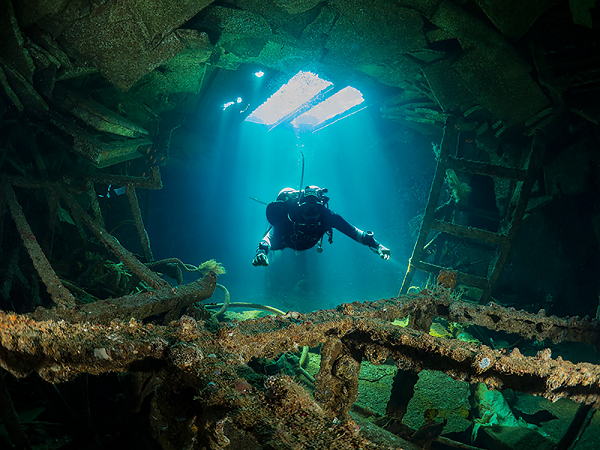Scuba diving is certainly a diverse sport, with a little bit of something for everyone. For some it is the colourful coral reefs and the unique tropical fish. For others it is the chance to encounter rays, sharks, and other big animals. Cave diving is another type of activity that divers with the need for discovery enjoy. But what about shipwrecks? The popularity of shipwreck diving is increasing as can be seen by the number of ships that have been deliberately sunk to create attractions for divers and form important reef environments.

Why Wreck Diving?
Ships end up at the bottom of lakes, oceans, and rivers due to collisions, navigational errors, war, storms, or onboard events such as explosions or fires. Also, nowadays, there are plenty of ships being sunk on purpose to create reefs. For the most part, wrecks that are found in shallower waters are the ones that are dived the most. There are many wrecks out there which have not been discovered or dived yet, but with improvement in technology more and more are being located every year.
Wreck divers, those who are serious about what they do anyway, have an innate need to explore. They get a kick by venturing somewhere where very few have ever been. To enter the interior of a wreck that has not been explored by many others is something that thrills them like nothing else can. Furthermore, shipwrecks give wreck divers the chance to take a step back into the past. Doing research about what led to particular tragedy and then visiting the site decades or centuries after the tragedy happened can feel like you are taking a journey back in time. Shipwrecks also give divers the perfect environment to improve their diving skills.
Safety and Training
Wreck diving is something that can be hazardous for any diver as there are many obstructions and snags such as fishing lines and trawler nets. To add to this, there is usually no ambient light and no easy escape to the surface. Inside a wreck that could be plenty of sharp edges, loose material, and many different passageways. Furthermore, many wrecks have a lot of silt inside that results in a lack of visibility when stirred, meaning that sometimes you will struggle to even see your hand in front of your face. Definitely not a scenario for the faint of heart.
Wreck diving is an elite skill and something that requires the proper equipment and training. However, it must be said that the skills needed for wreck diving can vary a lot depending on a number of different circumstances: the depth, the temperature of the water, the wreck’s condition, lake or sea conditions, and the ease of entering. If you only have an Open Water certificate, you are definitely not qualified to do go exploring a sunken ship. Wreck diving is something that needs a lot of preparation, proper equipment, and a plan - it should never ever be done on a whim.

Below is some important advice that wreck divers would do well to take on board:
- Speak to the dive operator about the wreck that is going to be explored so that you can make sure you have the required skills, equipment, and experience to ensure that you remain safe
- Make sure that your gear is snag free and streamlined, and make sure that you have a couple of knives on your person so that you can cut yourself free should you get tangled up in anything
- You need to remember that the sea is constantly changing wrecks and a wreck that was stable a month ago could be very unstable now
- Never change more than one variable when you are diving. For instance, if you are used to diving in warm water, start with a wreck that is in warm water and explore the outside of the wreck only. Attempting your first dry suit dive inside a wreck is not easy, and the load might be too much for you to handle in one go